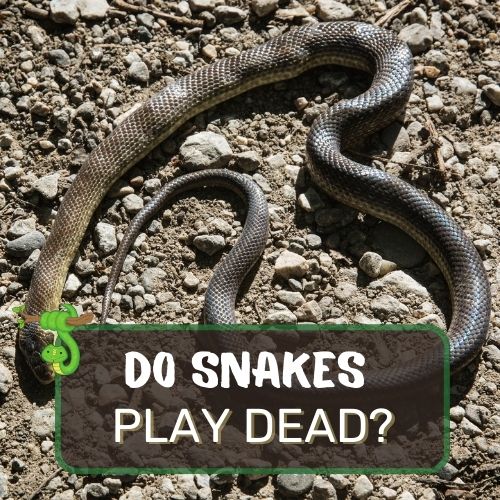
In the mysterious world of reptiles, one fascinating question lingers: “Do snakes play dead?”
This article delves into the captivating behavior of snakes and explores the reasons behind their death-feigning tactics.
Discover the defense mechanisms that snakes employ to evade predators, the physical behaviors they exhibit in their convincing performances, and real-life examples of snake species known for their acting skills.
Unravel the implications of playing dead in terms of survival strategies and ecological significance.
From scientific experiments to interactions with humans, explore the diverse aspects of this enigmatic behavior.
Join us on this journey as we uncover the secrets behind why and how snakes play dead, shedding light on the wonders of nature’s clever adaptations.
Table of Contents
- 1 Do snakes play dead? (Short Answer)
- 2 Reasons why snakes play dead
- 3 How snakes play dead
- 4 Snakes that are known to play dead
- 5 Benefits and drawbacks of playing dead
- 6 Studies and research on snake behavior
- 7 Interaction between humans and snakes that play dead
- 8 Similar behaviors in other animals that play dead
- 9 FAQ
- 10 Conclusion
Do snakes play dead? (Short Answer)
Yes, some snake species are known to play dead as a defense mechanism when faced with threats or predators. This behavior, also known as “thanatosis” or “death-feigning,” involves snakes going limp, remaining motionless, and sometimes even mimicking the appearance of a deceased snake. By adopting this tactic, snakes attempt to deceive their attackers and reduce the likelihood of becoming prey. The act of playing dead is a remarkable survival strategy observed in various snake species worldwide.
Reasons why snakes play dead

When it comes to the mysterious world of reptiles, snakes have long captured our curiosity with their enigmatic behaviors. One peculiar phenomenon that often leaves us amazed is their ability to play dead.
Yes, you heard that right! Just like actors on a stage, some snakes have mastered the art of feigning their own demise. But why do these slithering creatures resort to such a dramatic defense mechanism?
Let’s delve into the fascinating reasons behind this survival strategy.
Defense mechanism against predators
Imagine you’re a snake, and you encounter a fierce predator looking for its next meal. You have two options: to fight with the hope of winning or to fool your assailant into believing that you’re already gone.
For some snakes, playing dead is a brilliant tactical move to avoid becoming a predator’s dinner. When threatened, they enter a state known as “thanatosis,” commonly referred to as “death-feigning.”
By going limp and remaining motionless, these crafty serpents trick their foes into believing that they are no longer a viable meal.
The predator, usually seeking live prey, might be disinterested in a seemingly lifeless snake and move on to find an easier target. Thus, playing dead serves as an excellent ruse for survival in the harsh world of predator-prey interactions.
Survival strategy in dangerous situations
Nature can be merciless, and snakes, being cold-blooded, are highly susceptible to extreme environmental conditions.
When faced with dangerous situations such as extreme heat or cold, snakes may adopt the tactic of playing dead to survive the harsh elements.
Imagine a snake caught in the scorching heat of a desert. Instead of risking dehydration and overheating by continuing its journey, the snake might choose to play dead until the conditions become more favorable.
In this way, feigning death becomes a strategic way to conserve energy and endure unfavorable circumstances.
Examples of snakes that play dead
Nature never fails to surprise us with its diversity, and this holds true for snakes that play dead. One such master of deception is the Hognose Snake.
This North American serpent has a flair for theatrics, putting on an Oscar-worthy performance when threatened.
The Hognose Snake will hiss, puff up its body, and even go to the extent of rolling over, exposing its belly in a classic “dead snake” pose.
Not to be outdone, the Western Ribbon Snake is another expert in the art of playing dead. When faced with danger, it will flatten its body, remain completely still, and even release a foul-smelling musk to further convince its predators of its demise.
How snakes play dead
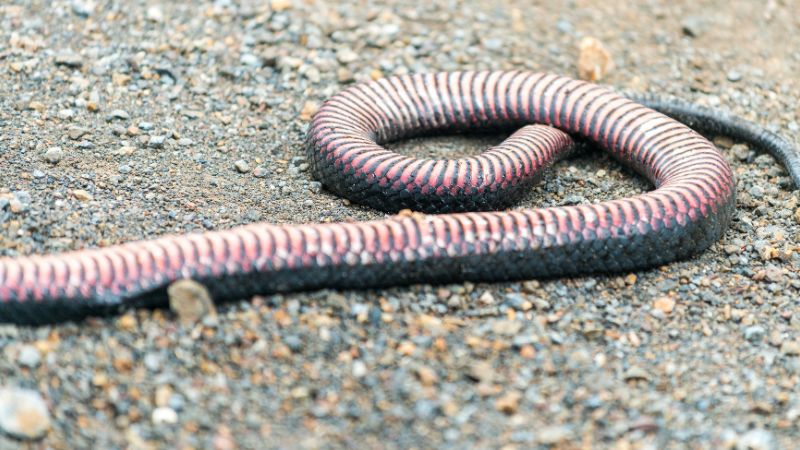
Now that we understand why snakes deploy this elaborate defense strategy, let’s take a closer look at how they actually play dead.
It’s not just a matter of acting unresponsive; these serpents have developed a set of behaviors and physical characteristics to perfect their act.
Physical behaviors and characteristics exhibited by snakes
When a snake decides to play dead, it takes on specific physical behaviors that aid in its act of deception.
One of the most crucial elements is “tonic immobility,” a state where the snake’s muscles become completely relaxed, giving it the appearance of a lifeless creature.
Additionally, some snake species exhibit behaviors like rolling onto their backs, sticking their tongues out, and defecating, further reinforcing the illusion of a dead snake.
These behaviors, combined with the reptile’s natural ability to hold its breath for an extended period, enhance the authenticity of their act.
Immobility and stillness
As mentioned earlier, stillness is a vital component of a snake’s death-feigning strategy. By staying motionless, the snake reduces its chances of being detected by predators who often rely on movement to spot their prey.
This tactic is especially useful when facing visually-oriented predators such as birds of prey or mammals.
Mimicking the appearance of a dead snake
To successfully convince predators that they are no longer a threat, snakes have evolved to mimic the appearance of a dead snake. This means assuming the classic pose with a limp body, mouth slightly open, and tongue hanging out.
Some snakes even take it a step further by contorting their bodies to look more convincing.
By imitating the physical characteristics of a deceased snake, they increase the likelihood of their predators losing interest and moving on in search of an easier meal.
Snakes that are known to play dead
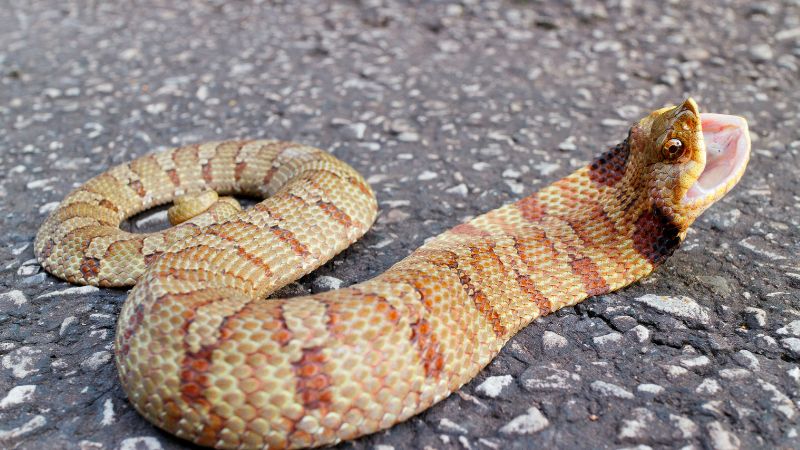
Now that we’ve explored the reasons and mechanisms behind snakes playing dead, let’s take a closer look at some specific snake species known for their exceptional acting skills in the face of danger.
Eastern Hognose snake
The Eastern Hognose snake, renowned for its dramatic antics, is a true master of playing dead. When confronted by a predator, this snake takes its performance to the next level.
It hisses loudly, puffs up its body, and, in an Oscar-worthy act, rolls over, revealing its belly in a convincing display of vulnerability.
If the theatrics don’t discourage the threat, the Hognose snake may even release foul-smelling musk as a last-ditch effort to convince the predator that it’s best to look elsewhere for a meal.
Indigo snake
Indigo snakes, one of the largest snake species in North America, have earned their reputation as formidable actors on the reptilian stage.
When threatened, they resort to playing dead by lying still, making their bodies go limp, and even regurgitating their recent meal to create the illusion of a lifeless snake.
These performances have saved them from many predators, proving that sometimes, playing dead can be a life-saving tactic.
Garter snake
Garter snakes are commonly found across North America, and some species within this group also utilize the “playing dead” strategy.
When faced with a potential threat, garter snakes may exhibit tonic immobility, where they remain motionless, often flipping onto their backs and sticking their tongues out to enhance the act.
This behavior has been observed in the Eastern Garter snake and other related species.
Rat snake
Rat snakes are a diverse group of non-venomous snakes found in various regions worldwide. Many rat snake species have been observed displaying thanatosis as a defense mechanism.
When confronted, these snakes may hang limply from branches or coil up and remain completely still, effectively convincing predators that they are no longer a threat.
Black snake
The Black snake, a common name for several snake species, is another skilled actor in the art of playing dead.
When threatened, Black snakes often mimic the appearance of a deceased snake, lying motionless and limp, sometimes with their mouths slightly open.
This tactic is particularly effective against visual predators that rely on movement to detect their prey.
Other species and their specific behaviors
Beyond the aforementioned examples, many other snake species around the world have been observed displaying variations of death-feigning behaviors.
Each species has its own unique way of playing dead, often involving combinations of stillness, contorted body positions, and even specialized color patterns or markings that resemble dead or decaying animals.
Benefits and drawbacks of playing dead
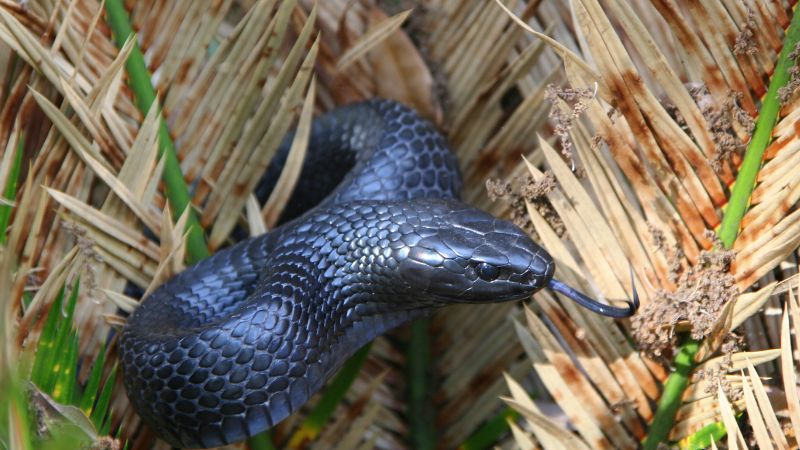
Like any survival strategy, playing dead comes with its own set of benefits and drawbacks for snakes. Let’s explore the advantages and disadvantages of this fascinating behavior.
Advantages in avoiding predation
The primary benefit of playing dead for snakes is its effectiveness in evading predators. By simulating death, snakes can deceive their attackers and reduce the likelihood of becoming a meal.
Predators often seek live and active prey, and the act of playing dead provides a valuable opportunity for snakes to escape danger and live to slither another day.
Disadvantages in terms of energy expenditure and vulnerability
While playing dead can be a successful defense tactic, it’s not without its costs. Adopting a death-feigning strategy requires significant energy expenditure for snakes.
The physical behaviors and contortions involved demand metabolic resources, potentially leaving the snake fatigued and vulnerable once it resumes its normal activities.
Furthermore, during the period of feigning death, snakes are at a heightened risk of falling prey to opportunistic scavengers.
Animals that specialize in consuming carrion might perceive the motionless snake as an easy meal, leading to potential predation during this vulnerable state.
Adaptation and evolution of playing dead in snakes
The ability to play dead is an intriguing example of how animals adapt to their environments over time.
Through natural selection, snakes that successfully employ this defense mechanism have an advantage, as they are more likely to survive and pass on their genes to the next generation.
Over time, the species that are most skilled at playing dead are more likely to persist, refining their strategies for improved effectiveness.
This has resulted in various snake species evolving unique behaviors and physical adaptations to excel in the art of feigning death.
In this ever-changing dance of predator and prey, snakes’ capacity to play dead stands as a testament to the wonders of evolution, showcasing the incredible diversity and ingenuity of life on our planet.
Studies and research on snake behavior
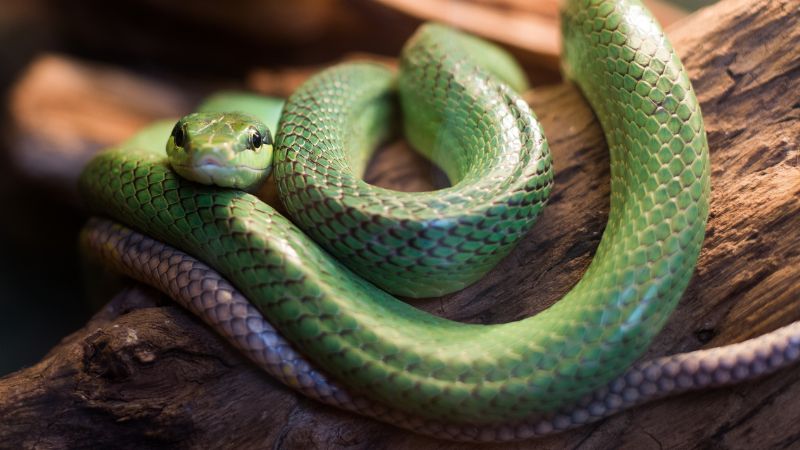
The intriguing behavior of snakes playing dead has captivated the attention of researchers and scientists worldwide. Over the years, numerous studies and observations have shed light on this fascinating aspect of snake behavior.
Scientific experiments and observations
Researchers have conducted controlled experiments to understand the mechanisms and triggers behind a snake’s death-feigning behavior. These studies often involve exposing snakes to simulated threats or predators to observe their responses.
By analyzing the snakes’ behavior, physiological changes, and brain activity during such experiments, scientists gain valuable insights into the neural and hormonal processes involved in playing dead.
Ethological studies on snake behavior
Ethology, the scientific study of animal behavior in their natural environments, has also contributed significantly to our understanding of snakes that play dead.
Ethologists spend countless hours observing snake species in their habitats, documenting various behaviors, including those related to defense mechanisms.
These observations help in deciphering the ecological and evolutionary significance of death-feigning strategies in different snake populations.
Insights gained from studying snakes that play dead
Studying snakes that play dead provides valuable information about the complex interplay between predators and prey in natural ecosystems.
It helps scientists understand the survival strategies of snakes and the factors that influence the evolution of such behaviors.
Additionally, research on this topic allows for a better comprehension of the ecological roles snakes play in their respective habitats and their impact on local food chains.
Interaction between humans and snakes that play dead
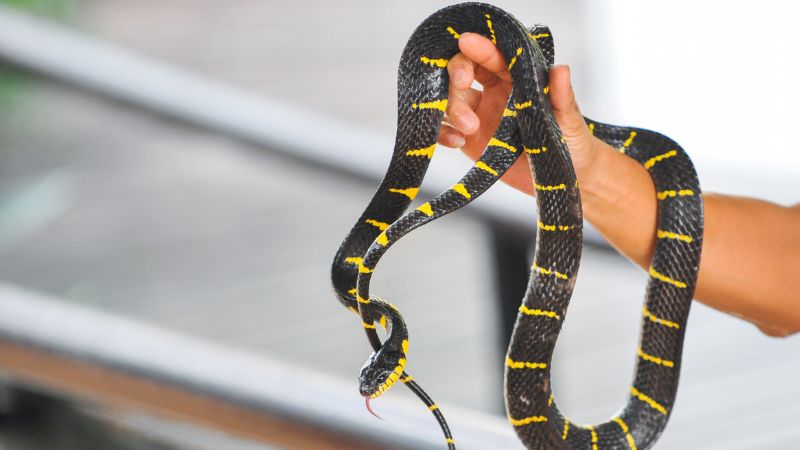
The encounter between humans and snakes that play dead often evokes a mix of fascination, fear, and misunderstanding. Let’s explore some common scenarios where humans come face to face with these acting reptiles.
Misunderstandings and misconceptions about playing dead in snakes
Many people hold misconceptions about snakes that play dead, often perceiving them as inherently dangerous or venomous.
This misunderstanding can lead to unnecessary fear and sometimes even to the killing of harmless snake species that pose no threat to humans.
Educational initiatives and public awareness programs play a crucial role in dispelling such misconceptions, helping people appreciate the significance of death-feigning behaviors in snake survival.
Encounters with snakes that play dead in the wild
Encountering a snake that appears lifeless can be an unnerving experience for hikers, campers, and nature enthusiasts.
However, it’s essential to remember that a snake displaying death-feigning behavior is not necessarily aggressive or posing an imminent threat.
In the wild, respecting the natural behavior of snakes and maintaining a safe distance is the best approach.
Snakes prefer to avoid confrontation and will typically use their play-dead strategy as a last resort when they feel cornered or threatened.
Pet snakes and their behaviors
In the realm of pet keeping, some snake species known for their death-feigning abilities are occasionally kept as exotic pets.
Owners of such snakes need to be aware of this behavior and its potential implications for the snake’s well-being.
Providing a stress-free and enriched environment for pet snakes can help minimize the need for them to resort to playing dead as a defense mechanism.
Understanding their natural behaviors allows pet owners to create suitable habitats and handle their snakes with care and respect.
Similar behaviors in other animals that play dead
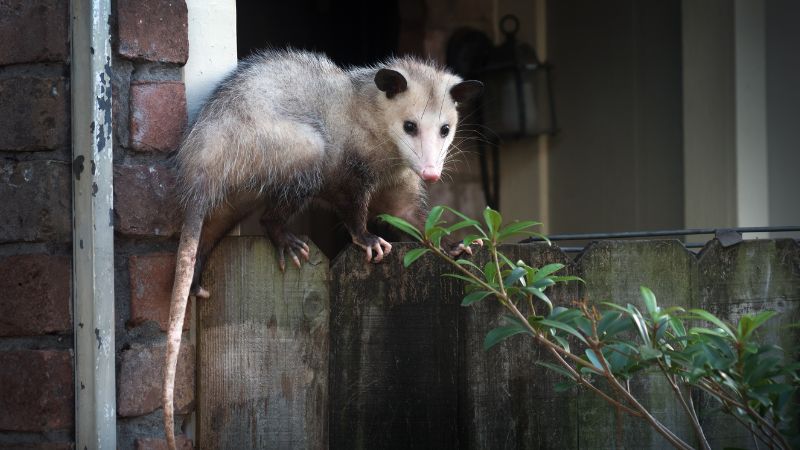
The intriguing phenomenon of playing dead is not unique to snakes; it is also observed in various other animal species. Let’s explore some comparisons, differences, and the implications of such behaviors for evolutionary biology.
Comparisons to other species that play dead
Several animals from different taxonomic groups employ death-feigning strategies to avoid predators.
Some insects, such as certain species of beetles and butterflies, may drop to the ground and remain motionless when threatened, mimicking a dead state to deceive their predators.
Certain animals, like the American opossum, have also evolved to play dead when faced with danger. The opossum takes this act a step further by secreting a foul-smelling liquid from its anal glands, adding an olfactory dimension to its deception.
Differences and similarities in tactics and motivations
While the act of playing dead shares common elements across species, there are differences in the tactics employed and the motivations behind the behavior.
In snakes, playing dead often involves lying motionless, contorting their bodies, and releasing musk as a deterrent.
In contrast, insects may drop to the ground, birds may limp and close their eyes, and some mammals may even defecate to appear more convincingly lifeless.
Motivations for playing dead can also vary. In snakes, it primarily serves as a defense mechanism against predators.
For insects, it may be a last-ditch effort to avoid predation, while in the case of opossums, it can serve as a response to extreme fear or danger.
Implications for evolutionary biology
The presence of death-feigning behavior in various animal groups underscores its evolutionary significance.
This defensive strategy appears to have independently evolved in different lineages over time, emphasizing its effectiveness in enhancing survival and increasing the likelihood of passing on favorable traits to future generations.
The study of playing dead in different species provides valuable insights into the principles of convergent evolution, where unrelated organisms develop similar adaptations in response to similar environmental pressures.
This phenomenon not only showcases the remarkable plasticity of animal behavior but also emphasizes the importance of survival strategies in shaping the diversity of life on Earth.
FAQ
What kind of snake pretends to play dead?
Several snake species are known for their death-feigning abilities. Some prominent examples include the Eastern Hognose snake, Indigo snake, Garter snake, Rat snake, and Black snake. These snakes may adopt various behaviors, such as staying motionless, hissing, puffing up their bodies, or even rolling over to convincingly imitate a deceased state.
What is the zombie snake?
The term “zombie snake” is often used to refer to the Hognose snake, particularly the Eastern Hognose snake (Heterodon platirhinos). When threatened, this snake puts on an impressive display of defense, hissing, puffing up its body, and pretending to be dead, resembling a zombie in appearance.
What snake plays dead and stinks?
The Western Ribbon Snake (Thamnophis proximus) is a species that can play dead and stink as a defense mechanism. When faced with danger, this snake may release a foul-smelling musk as it remains motionless, further enhancing the illusion of being deceased.
Conclusion
Throughout this article, we’ve delved into the captivating world of snakes playing dead, exploring the reasons behind this survival strategy, the fascinating behaviors exhibited by various snake species, and the implications it holds for both humans and the field of evolutionary biology.
We began by unraveling the reasons why snakes play dead, highlighting its role as a defense mechanism against predators and a survival strategy in harsh environmental conditions.
Real-life examples, such as the Eastern Hognose snake and Indigo snake, showcased the dramatic performances these reptiles put on to escape danger.
We then examined how snakes play dead, focusing on the physical behaviors and characteristics they adopt to deceive predators effectively.
From tonic immobility to mimicking the appearance of a deceased snake, these tactics revealed the depth of their crafty performances.
Moving on, we explored the benefits and drawbacks of playing dead, acknowledging the advantages in avoiding predation but also the energy expenditure and vulnerability involved.
The study of snake behavior, including death-feigning, remains an exciting area of research.
Ethological studies and scientific experiments provide valuable insights into the neural and hormonal mechanisms involved in this behavior, contributing to a broader understanding of animal survival strategies.
Intriguingly, this behavior is not exclusive to snakes, as we discovered similar strategies in other animal groups.
This highlights the relevance of comparative studies in understanding the principles of convergent evolution and the diversity of defensive adaptations in the animal kingdom.

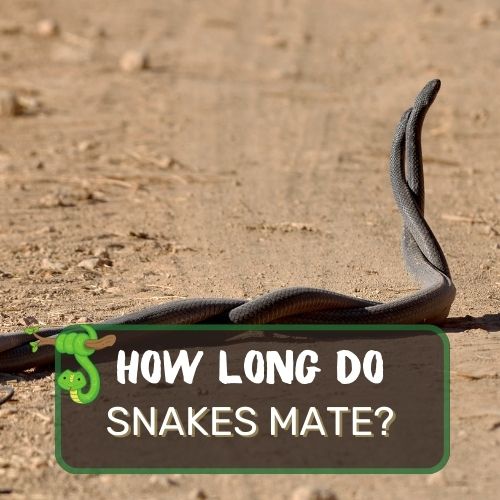

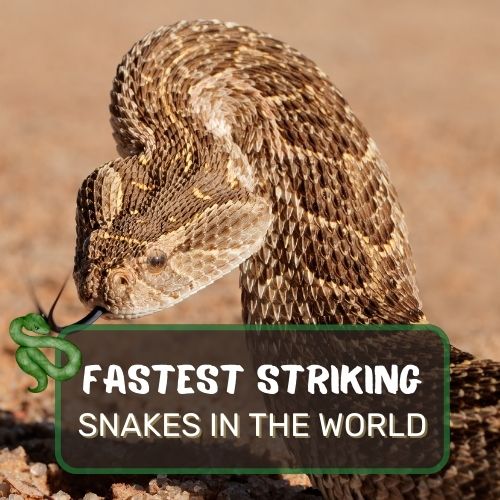
0 Comments